Cranberries: Coloring Up
As temperatures cool, cranberries darken up. Color and total anthocyanin content (TAcy) increase together, and both TAcy and color contribute to the active market for our crop. As dark color for juices and medium color sweetened dried cranberries suit consumer preferences, anthocyanin content is linked with positive health outcomes and may lead to future specialized demand [4].
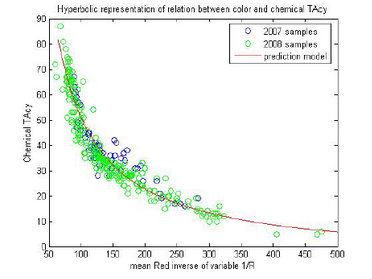
Processors all care about fruit color so that they can blend to create consistent products ideal for market. The measurements handlers use to assess berry color and TAcy for their internal use, and for grower bonuses or penalties, can vary as new technologies are proven out. For 2020, some handlers are using photospectrometry, and others are using non-desctructive imagery. Nondestructive imagery enables larger samples to be taken from each load than is possible with photospectometry [3].
Harvest logistics can be driven by color and fruit quality—harvesting at the sweet spot of desired color but before a deterioration of quality follows a consistent pattern year to year for each variety. From year to year, we observe changes in the overall coloration timeline varying by sunlight and by overnight low temperatures. Managing temperature reduction to enhance color and TAcy without suffering cold injury is an area where attentive management can shine. The pictures included show some differences between the coloration of upper-upright berries on northern and southern exposure berries.
Though you may not have a spectrophotometer or machine vision setup on your farm, assessing your own color can guide frost protection tolerance decisions and harvest logistic decisions. Use a consistent background and consistent lighting from day to day, so that environmental variation doesn’t influence your assessments. In the northern and southern exposure comparisons, I’ve compared my two samples in the same image at the same time. When I need to compare color development on different days, the white and wooden backgrounds below illustrate the importance of consistence—those are the same berries.
A final note on quality that isn’t impacted by color—remember to remind your harvest crew about the importance of keeping foreign materials out of the beds. Soda breaks and smoke breaks should be taken at trucks or break sites to keep our quality great!
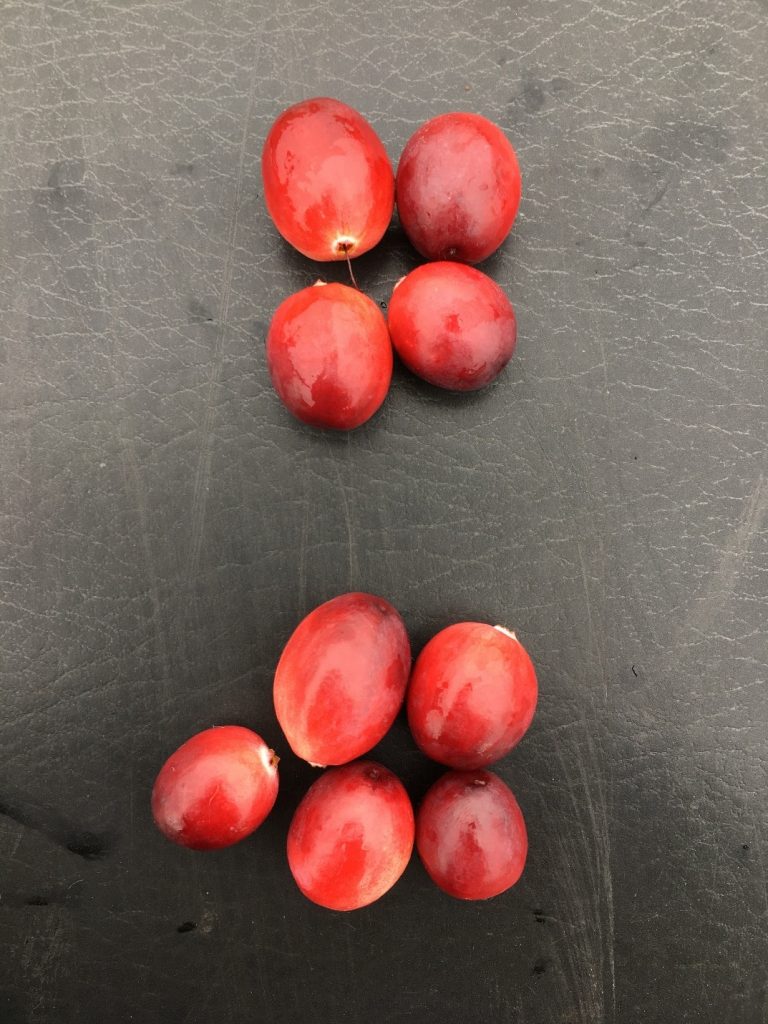
Northern facing (top) and southern facing (bottom) Ben Lears 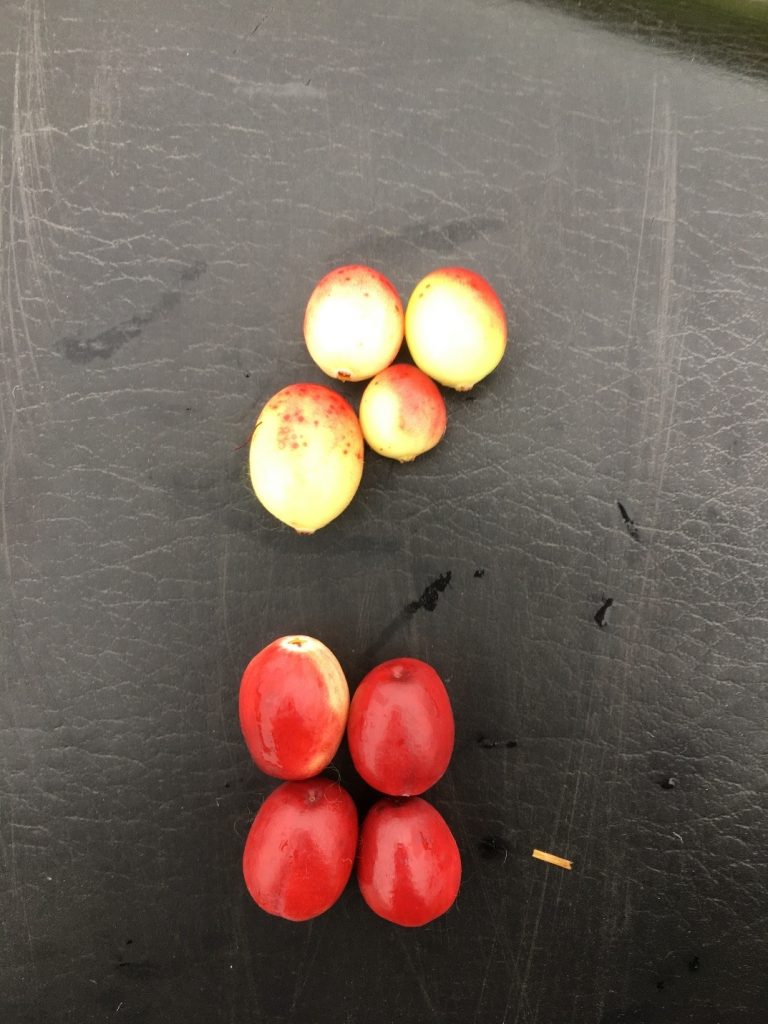
Northern-facing (top) and southern facing (bottom) McFarlanes. 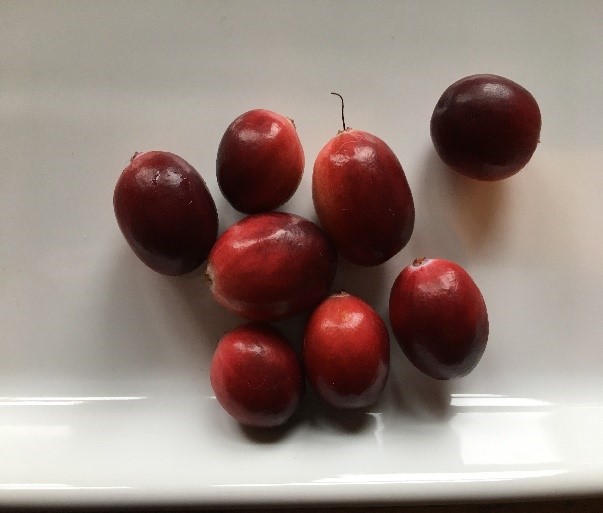
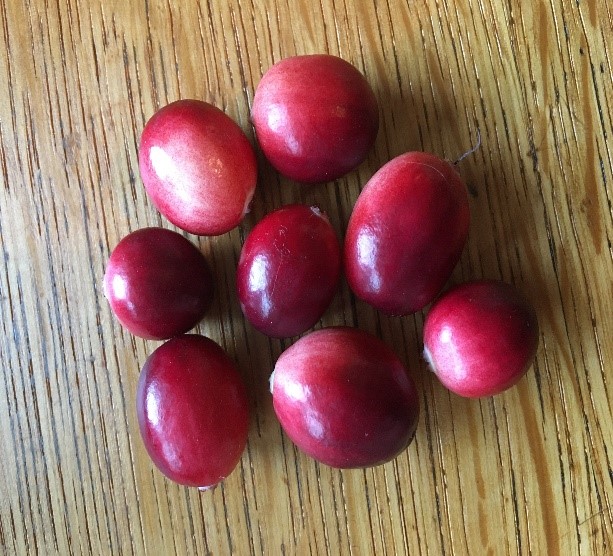
3 Digital TAcy: Proof of Concept
4 Characterization of bioactive cranberry fractions by mass spectrometry
This article was posted in Cranberry and tagged Allison Jonjak, color, Cranberries, cranberry, TAcy, total anthocyanin content.
